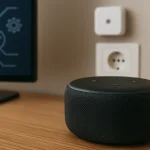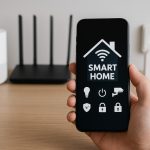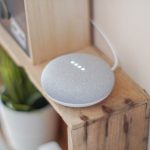Smart cities are no longer just a futuristic concept—they are becoming a reality around the globe, thanks largely to the Internet of Things (IoT). By embedding sensors, software, and other technologies into everyday infrastructure, cities are transforming into highly efficient, sustainable, and livable environments. In this article, we’ll explore how IoT in smart cities is changing the way we live, commute, and interact with urban spaces.
What Is a Smart City?
A smart city uses digital technologies, especially IoT, to enhance performance, well-being, and reduce costs across urban infrastructure and services. This includes everything from transportation and energy to healthcare and public safety. Through real-time data collection and analysis, smart cities make better decisions, improve operations, and provide a higher quality of life to residents.
Core Applications of IoT in Smart Cities
1. Smart Traffic Management
IoT-enabled traffic lights and sensors help reduce congestion by adjusting signal timing in real-time based on traffic flow. Connected vehicles and public transport systems can share data to optimize routes and minimize delays.
2. Waste Management
Smart bins equipped with fill-level sensors alert waste management services when they need to be emptied. This reduces unnecessary pickups, cuts fuel costs, and keeps the city cleaner.
3. Energy Efficiency and Smart Lighting
Smart streetlights can dim or brighten based on pedestrian activity or daylight levels. These IoT systems lower electricity use and maintenance costs while improving safety.

4. Environmental Monitoring
Air quality sensors, noise level detectors, and water quality monitors provide real-time environmental data. Cities can use this data to enforce regulations, protect public health, and respond quickly to issues.
5. Public Safety and Surveillance
Smart cameras and gunshot detection systems help law enforcement monitor high-risk areas. Emergency services can also receive real-time alerts, improving response times.
6. Connected Public Transport
IoT improves transit systems by enabling real-time tracking of buses and trains. Commuters get up-to-date arrival times, and operators gain insights into system efficiency.
Benefits for Citizens and Governments
- Improved Quality of Life: Quicker commutes, cleaner environments, and safer neighborhoods make daily life easier.
- Cost Efficiency: Cities save money on operations like lighting, trash collection, and energy use.
- Data-Driven Decisions: Urban planners and administrators can make informed decisions using live data.
- Sustainability: Smarter energy and resource management leads to a smaller environmental footprint.
Real-World Examples
- Singapore: The city-state uses IoT for everything from smart parking to water management.
- Amsterdam: IoT solutions help optimize traffic flow and monitor air quality.
- Barcelona: Implemented smart street lighting and an IoT-based waste management system.
Challenges to Overcome
- Data Privacy and Security: Collecting massive amounts of data raises serious privacy and cybersecurity concerns.
- Infrastructure Costs: High upfront costs for sensor deployment and network infrastructure.
- Interoperability: Systems from different vendors must work together seamlessly.
Looking Ahead: The Role of IoT in Shaping Sustainable Cities
As urban populations grow, the need for smarter, more efficient city infrastructure becomes even more critical. IoT is at the heart of this transformation, enabling cities to be more responsive, sustainable, and livable. While there are challenges to address, the future of IoT in smart cities is promising, with innovations like AI integration, 5G networks, and advanced analytics poised to make cities even smarter.
The journey toward smarter cities has only just begun. With continued investment and collaboration between governments, tech companies, and communities, IoT will undoubtedly be the driving force behind urban innovation for decades to come.
- Local AI in Smart Homes: What Happens When the Cloud Goes Down?
 In the age of cloud computing and always-connected devices, smart homes have become increasingly dependent on the internet. But what happens when your connection drops? That’s where local AI comes into play. This article explores the benefits, limitations, and future of local AI in smart homes systems—and why it might be the key to a…
In the age of cloud computing and always-connected devices, smart homes have become increasingly dependent on the internet. But what happens when your connection drops? That’s where local AI comes into play. This article explores the benefits, limitations, and future of local AI in smart homes systems—and why it might be the key to a… - Hidden Features of Your Smart TV You’re Probably Not Using — But Should
 Smart TVs have come a long way since their early days. While most people use them for Netflix, YouTube, and the occasional screen mirroring session, today’s smart TVs pack a wealth of features that often go unnoticed. These hidden gems can transform your entertainment experience, improve convenience, and even tighten your home security. In this…
Smart TVs have come a long way since their early days. While most people use them for Netflix, YouTube, and the occasional screen mirroring session, today’s smart TVs pack a wealth of features that often go unnoticed. These hidden gems can transform your entertainment experience, improve convenience, and even tighten your home security. In this… - Smart Bathrooms: Hygiene and Automation Combined
 In 2025, the bathroom is no longer just a functional space—it’s a hub of innovation. With the rise of smart home technology, bathrooms are getting a high-tech makeover. From automatic faucets to AI-powered mirrors, the smart bathroom combines hygiene and automation to create a cleaner, more convenient daily experience. Let’s explore what this transformation means,…
In 2025, the bathroom is no longer just a functional space—it’s a hub of innovation. With the rise of smart home technology, bathrooms are getting a high-tech makeover. From automatic faucets to AI-powered mirrors, the smart bathroom combines hygiene and automation to create a cleaner, more convenient daily experience. Let’s explore what this transformation means,… - Voice Assistants vs Smart Home Hubs: What Should You Choose?
 In today’s connected homes, convenience is only a voice command away. But when building or upgrading a smart home, many people face a common dilemma: Should you rely on voice assistants like Alexa or Google Assistant, or opt for a dedicated smart home hub like SmartThings or Hubitat? Both systems offer powerful ways to automate…
In today’s connected homes, convenience is only a voice command away. But when building or upgrading a smart home, many people face a common dilemma: Should you rely on voice assistants like Alexa or Google Assistant, or opt for a dedicated smart home hub like SmartThings or Hubitat? Both systems offer powerful ways to automate… - How to Build a Private Smart Home Network Without the Cloud
 In a world where convenience often comes at the cost of privacy, many smart home owners are beginning to ask: Do I really need the cloud to run my smart devices? The answer is: no, you don’t. In fact, building a private smart home network is not only possible — it’s more secure, faster, and…
In a world where convenience often comes at the cost of privacy, many smart home owners are beginning to ask: Do I really need the cloud to run my smart devices? The answer is: no, you don’t. In fact, building a private smart home network is not only possible — it’s more secure, faster, and…








